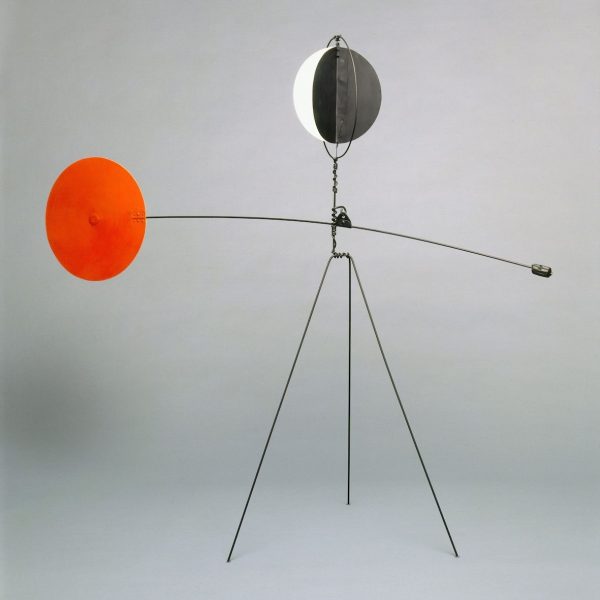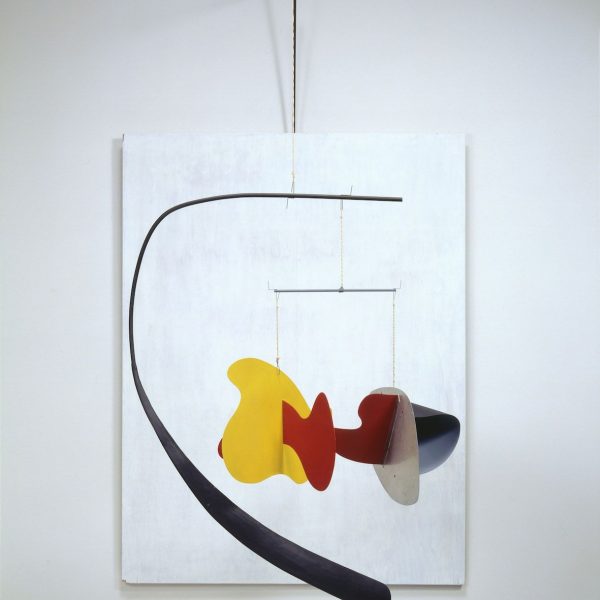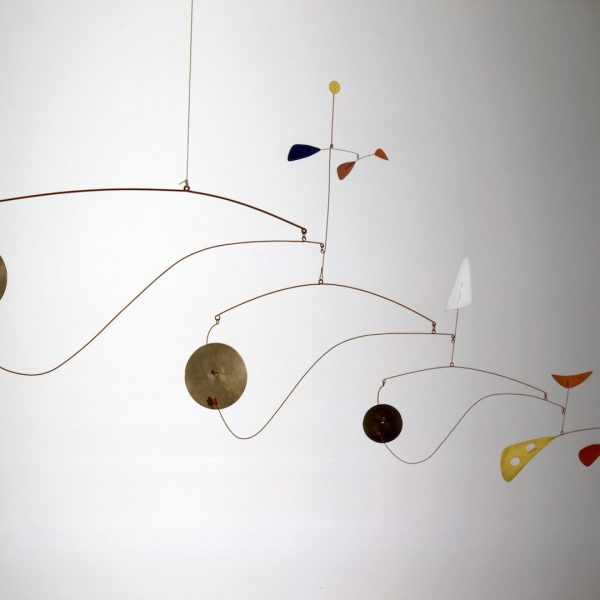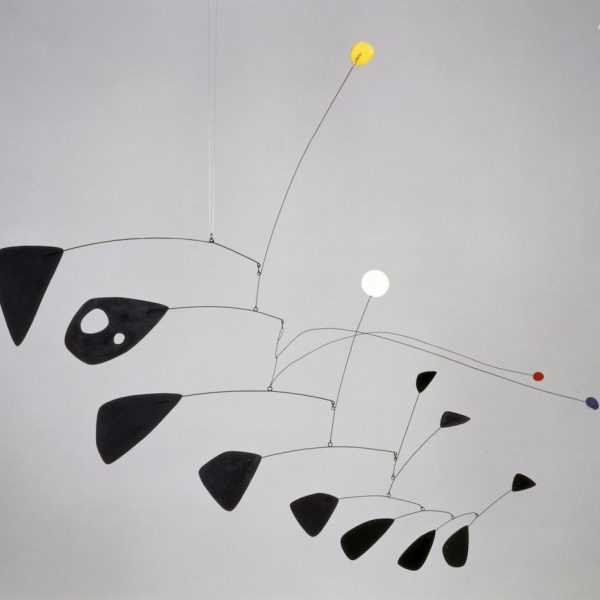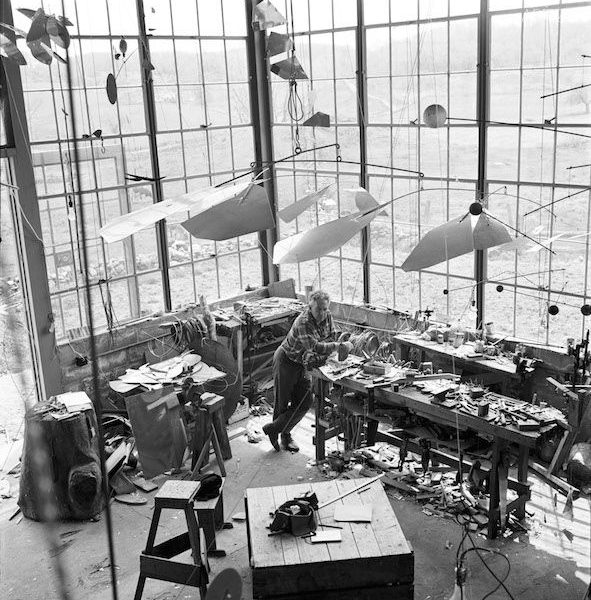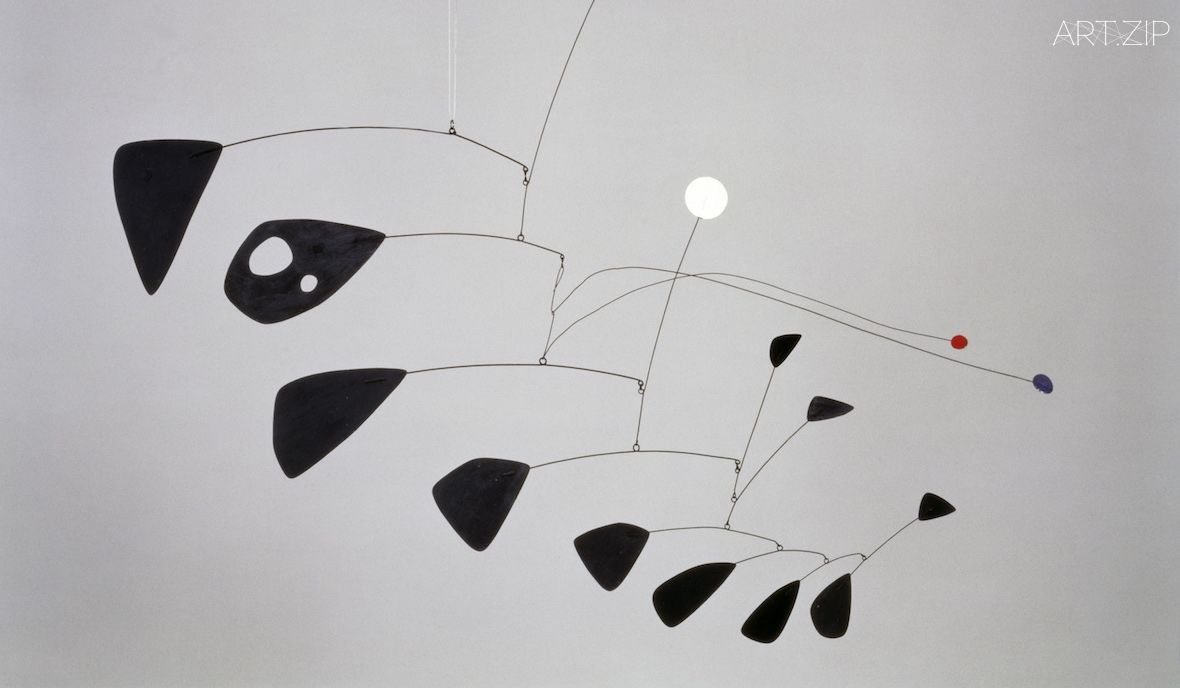
11 November 2015 – 3 April 2016 Tate Modern, London
Tate Modern presents the UK’s largest ever exhibition of Alexander Calder (1898-1976). Calder was one of the truly ground-breaking artists of the 20th century and, as a pioneer of kinetic sculpture, played an essential role in shaping the history of modernism. Alexander Calder: Performing Sculpture brings together approximately 100 works to reveal how Calder turned sculpture from a static object into a continually changing work to be experienced in real time. Alexander Calder initially trained as an engineer before attending painting courses at the Arts Students League in New York. He travelled to Paris in the 1920s where he developed his wire sculptures and by 1931 had invented the mobile, a term first coined by Marcel Duchamp to describe Calder’s motorised objects.
The exhibition also features the figurative wire portraits Calder created of other artists including Joan Miró 1930 and Fernand Léger c.1930, alongside depictions of characters related to the circus, the cabaret and other mass spectacles of popular entertainment. Following a visit to the studio of Piet Mondrian in 1930, where he was impressed with the environment-as-installation, Calder created abstract, three-dimensional, kinetic forms and suspended vividly coloured shapes in front of panels or within frames hung on the wall. Red Panel1936, White Panel 1936 and Snake and the Cross 1936 exemplify the artist’s continuous experimentation with forms in space and the potential for movement to inspire new sculptural possibilities. The exhibition includes a selection of his most significant motorised mobiles. Black Frame 1934 and A Universe 1934 reveal the ways in which Calder made use of his training as an engineer and his fascination with the dynamism of the cosmos. By 1932, Calder’s suspended sculptures would begin to move without motors, animated by just the lightest of air currents. In Snow Flurry I1948, Calder demonstrates his masterful expertise in constructing large-scale mobiles whose equilibrium and reduced palette awards them their sublime quality. Calder reinvented the possibilities of sculpture in parallel with avant-garde developments in theatre and dance. He incorporated elements of choreography and sound to fundamentally change the principles of traditional sculpture, creating mobiles which chime and resonate such as Red Gongs 1950, Streetcar 1951 and Triple Gong 1951. The exhibition closes with Calder’s large scale mobile Black Widow c.1948, shown for the first time ever outside Brazil, demonstrating how his art in motion turned global after WWII and came to serve as a visual metaphor for a new and free social order.
。
亞歷山大·考爾德:舞動的雕塑
11.11. 2015 – 3.4.2016
倫敦泰特現代美術館
倫敦泰特現代美術館舉辦了英國史上最具規模的亞歷山大·考爾德回顧展(1898-1976)。考爾德是20世紀極具開拓精神的藝術家之一,作為動態雕塑的領軍人物,他在現代史上的地位不容小覷。展覽中的100件作品展現了考爾德為雕塑界帶來了革命性變革——將靜態對象轉變為恆動的作品。
考爾德曾經是名工程師,其後在紐約藝術學生聯盟(the Arts Students League)接受了藝術的洗禮,於上世紀20年代 ,旅居巴黎的他進一步發展了他的金屬絲制雕塑,到1931年他獲得了一生中最重要的成就,好友杜尚(Marcel Duchamp)將其稱做“動態雕塑(mobile)”。
此次展覽展出了具象的金屬絲製肖像作品,如米羅(Joan Miró )和費爾南·萊熱(Fernand Léger)的肖像,還有馬戲團、歌舞表演和其他大眾娛樂場所的人物肖像等。在1930年,考爾德走訪了蒙德里安(Piet Mondrian)的工作室,並為抽象的色塊及比例構成環境大為觸動,隨即考爾德創作了一系列抽象、立體、動態且懸浮的彩色金屬片,將其懸掛在牆上的畫板前或框架內,如《紅板(Red Panel)》、《白板(White Panel)》和《蛇與十字(Snake and the Cross)》均顯示了藝術家在空間形式和移動可能性方面孜孜不倦的探索精神。
展覽中,考爾德最重要的一些早期動態雕塑作品如《黑框(Black Frame)》、 《宇宙(A Universe)》充分展現了考爾德強大的工程學背景還有他對宇宙萬物動態的迷戀。到了1932年,考爾德的懸浮雕塑已經可以脫離機械動力的輔助,僅借助最輕微的氣流移動,如《飛雪(Snow Flurry I)》就是他超群技藝下的又一力作,平衡性和對單色的運用在作品中發揮到了極致。
考爾德發展了雕塑的更多可能性,更在戲劇和舞蹈方面推動了先鋒藝術在其領域的發展。他結合了舞蹈和聲音的元素從根本上改變傳統雕塑的原理,如《紅鑼(Red Gongs)》、《有軌電車(Streetcar)》、《三重鑼(Triple Gong)》,這些動態雕塑被賦予了旋律,更充滿了生命力 。大型動態雕塑《黑寡婦(Black Widow)》是展覽的最大亮點,這是首次在巴西以外的展示機會,作品展現了二戰後他的動態藝術影響著全球,為這個全新的、自由的社會秩序提供了一個視覺隱喻。
Edited by Qiwen Ke
編輯:柯淇雯

